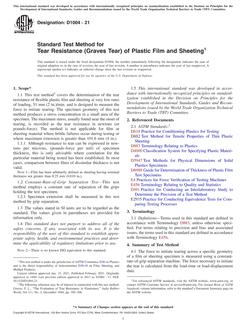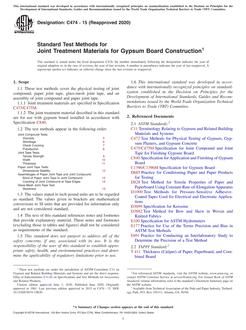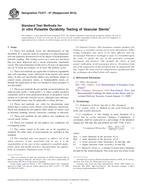1.1 This guide is focused on the general procedures necessary to conduct neutron or neutron porosity (hereafter referred to as neutron) logging of boreholes, wells, access tubes, caissons, or shafts (hereafter referred to as boreholes) as commonly applied to geologic, engineering, ground-water and environmental (hereafter referred to as geotechnical) investigations. Neutron soil moisture measurements made using neutron moisture gauges, are excluded. Neutron logging for minerals or petroleum applications is excluded, along with neutron activation logs where gamma spectral detectors are used to characterize the induced gamma activity of minerals exposed to neutron radiation.
1.2 This guide defines a neutron log as a record of the rate at which thermal and epithermal neutrons are scattered back to one or more detectors located on a probe adjacent to a neutron source.
1.2.1 Induction logs are treated quantitatively and should be interpreted with other logs and data whenever possible.
1.2.2 Neutron logs are commonly used to: ( 1) delineate lithology, and (2) indicate the water-filled porosity of formations (see Fig. 1).
1.3 This guide is restricted to neutron logging with nuclear counters consisting of scintillation detectors (crystals coupled with photomultiplier tubes), or to He³-tube detectors with or without Cd foil covers or coatings to exclude thermalized neutrons.
1.4 This guide provides an overview of neutron logging including: (1) general procedures; ( 2) specific documentation; (3) calibration and standardization, and (4) log quality and interpretation.
1.5 To obtain additional information on neutron logs see References section in this guide.
1.6 This guide is to be used in conjunction with Standard Guide D 5753.
1.7 This guide offers an organized collection of information or a series of options and does not recommend a specific course of action. This guide should not be used as a sole criterion for neutron logging and does not replace education, experience, and professional judgment. Neutron logging procedures should be adapted to meet the needs of a range of applications and stated in general terms so that flexibility or innovation are not suppressed. Not all aspects of this guide may be applicable in all circumstances. This ASTM standard is not intended to represent or replace the standard of care by which the adequacy of a given professional service must be judged without consideration of a project’s many unique aspects. The word standard in the title of this document means that the document has been approved through the ASTM consensus process.
1.8 The geotechnical industry uses English or SI units. The neutron log is typically recorded in units of counts per second (cps) or in percent porosity.
This standard does not purport to address all of the safety concerns, if any, associated with its use. It is the responsibility of the user of this standard to establish appropriate safety and health practices and determine the applicability of regulatory requirements prior to use. The use of radioactive sources in neutron logging introduces significant safety issues related to the transportation and handling of neutron sources, and in procedures to insure that sources are not lost or damaged during logging. There are different restrictions on the use of radioactive sources in logging in different states, and the Nuclear Regulatory Agency (NRC) maintains strict rules and regulations for the licensing of personnel authorized to conduct nuclear source logging.
Product Details
- Published:
- 07/01/2007
- Number of Pages:
- 9
- File Size:
- 1 file , 260 KB


